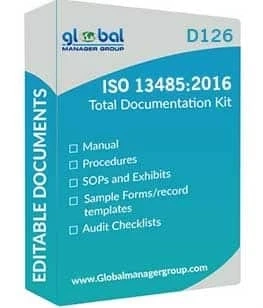In the intricate landscape of medical device manufacturing, adherence to stringent standards is paramount. This article explores the pivotal reasons why medical device manufacturers must prioritize ISO 13485 requirements, shedding light on their crucial role in ensuring product quality and regulatory compliance. However why precisely do clinical device manufacturers want to prioritize its requirements? Let\'s delve deeper.
A Matter of Life and Safety:
The primary reason boils down to patient protection. Each medical device, from simple bandages to complex implants, has the potential to impact lives. By adhering to the stringent requirements of ISO 13485, manufacturers demonstrate a commitment to:
- Identifying, hazards and risks: The standard promotes a proactive approach, requiring systematic identification and control of potential hazards throughout the entire device lifecycle, from design and development to manufacturing and post-market surveillance.
- Implementing robust quality control processes: Defined procedures, rigorous inspections, and meticulous documentation ensure consistent quality at every stage, minimizing errors and defects.
- Maintaining traceability and transparency: A comprehensive record-keeping system allows for clear tracking of materials, components, and devices, facilitating efficient incident investigation and recall management, should the need arise.
Navigating the Requirements:
The ISO 13485 standard outlines a set of requirements that cover all aspects of a QMS, including:
- Quality management system documentation: This includes the ISO 13485 manual, quality policy, procedures, and work instructions.
- Risk management: Implementing a risk management system to identify, assess, and control potential hazards.
- Design and development controls: Ensuring that devices are designed and developed following defined processes and meet predetermined specifications.
- Production and service provision controls: Implementing procedures for manufacturing, sterilization, packaging, and distribution, along with service and maintenance activities.
- Purchasing and supplier controls: Establishing criteria for selecting and managing suppliers to ensure the quality of procured materials and components.
- Monitoring and measurement: Regularly monitoring key performance indicators (KPIs) to assess the effectiveness of the QMS and identify areas for improvement.
ISO 13485 places a strong emphasis on documentation. This part of the article highlights the role of documented procedures, records, and the ISO 13485 manual in demonstrating compliance and providing a clear framework for continuous improvement.
Beyond Safety: Benefits
While patient safety is the cornerstone, prioritizing ISO 13485 requirements unlocks a plethora of other benefits:
- Regulatory Compliance: The standard aligns with international regulatory frameworks, easing market access and simplifying interactions with regulatory bodies. This translates to faster time to market and reduced compliance burdens.
- Operational Efficiency: Streamlined processes, optimized workflows, and minimized errors lead to cost savings and increased productivity, boosting the bottom line.
- Enhanced Brand Reputation: Demonstrating unwavering commitment to quality through certification builds trust and confidence among stakeholders, including healthcare professionals, patients, and investors. This translates to a stronger brand image and competitive edge.
- Continuous Improvement: The standard fosters a culture of continuous learning and improvement through internal audits, management reviews, and corrective actions, ensuring ongoing quality enhancement and adaptation to evolving technologies and regulations.
Conclusion:
Prioritizing ISO 13485 requirements is not just an option; it\'s an imperative for medical device manufacturers. By embracing its principles and pursuing certification, you ensure patient safety, gain a competitive edge, and contribute to a healthier future for all. Remember, quality is not just a goal; it\'s a responsibility, and ISO 13485 provides the roadmap for achieving it.



